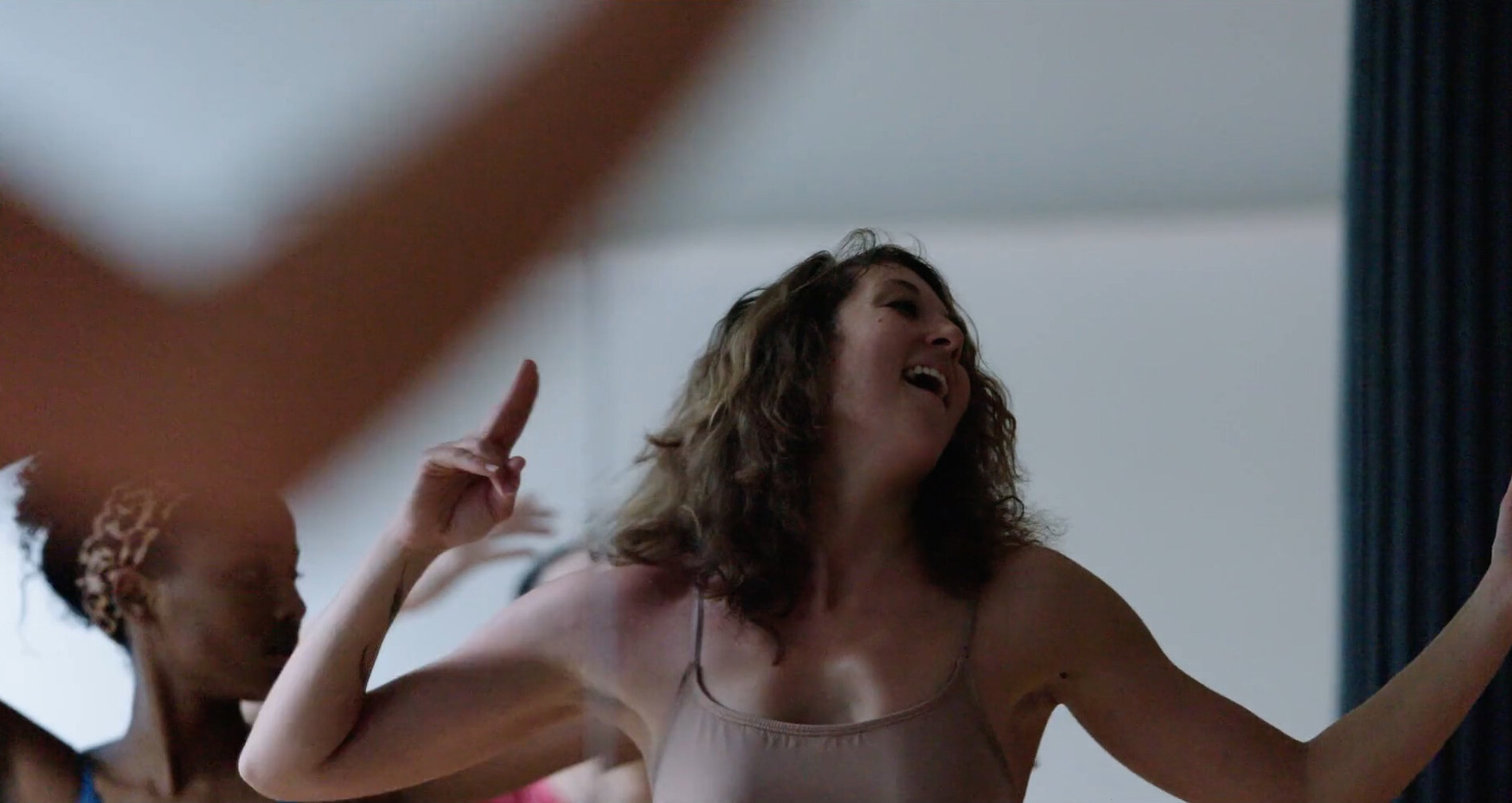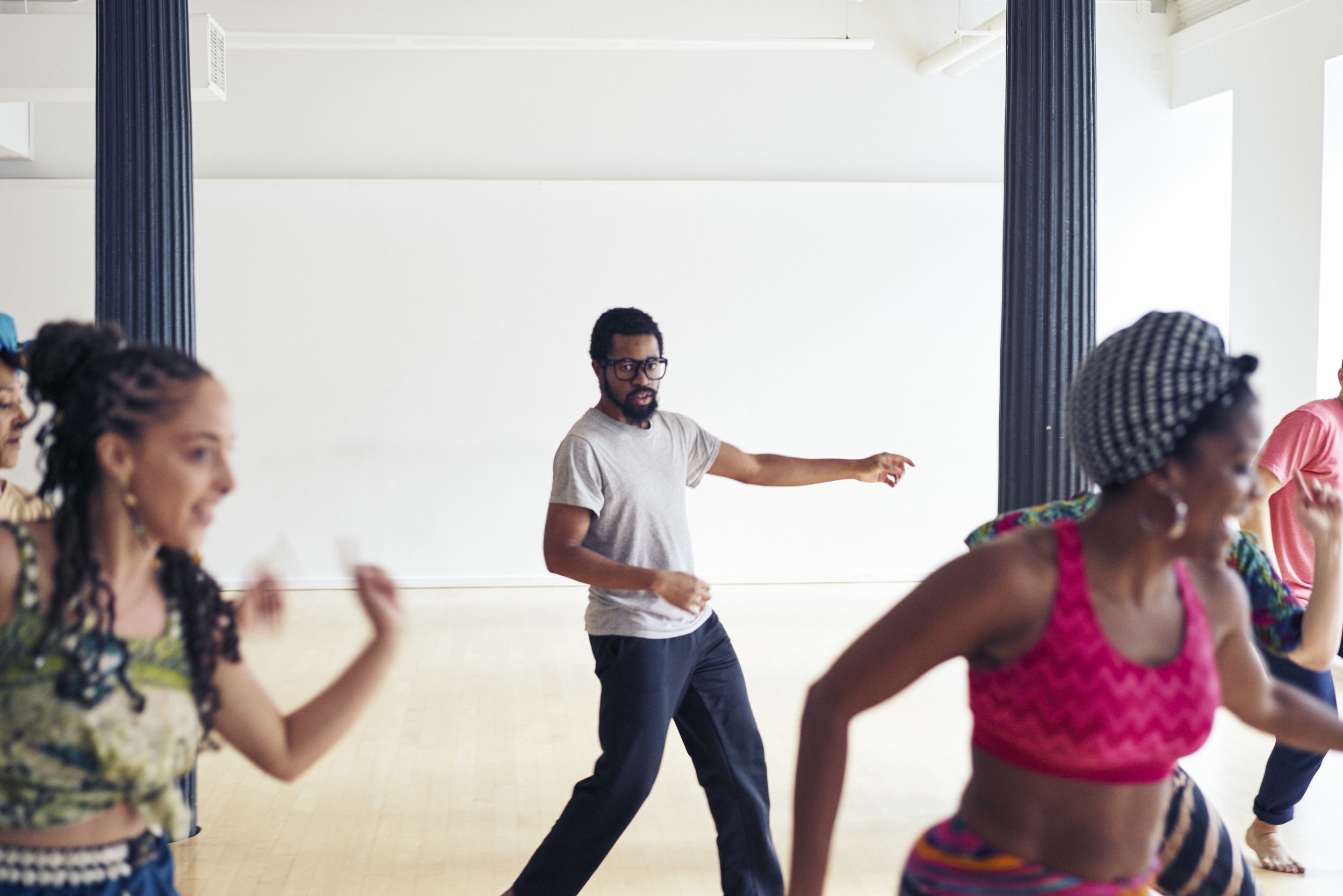Q&A with Angeline Gragasin
A conversation with Angeline Gragasin, the NYC-based filmmaker behind ‘Yanvalou’.
Why did you want to make this film?
“Yanvalou” was inspired by a personal struggle to connect with human beings—and my own body—within the conflicting cultures of the dance studio and digital startup environments. Though not a documentary per se, the film is based on a true story from my own personal experience. And while I myself am not a computer programmer (although I do have some basic coding skills!), considering the increasing number of hours I was spending at computer at the time, I could certainly empathize with the isolation and disembodiment a developer might begin to feel after spending so much time in the virtual world, in front of a screen—instead of in the real world, in their own body.
The Man’s (Ikechukwu Ufomadu) transformation through dance is based directly on my own real-life experience in master Haitian dancer and choreographer Julio Jean’s real-life dance class, alongside real-life dancer Rachel Wyman. This is exactly how I met Rachel and Julio in the first place: when I began taking Julio’s class at Cumbe Center for African and Diaspora Dance in 2014. Learning to dance with Rachel and Julio was a transformative, empowering experience for me. I wanted to share this experience—and inspire others who felt similarly disturbed by their own disembodiment—by dramatizing it into a short film, and making people laugh.
What was the greatest challenge you experienced in making this film?
The greatest challenge with “Yanvalou” was getting it seen on the big screen. I struggled to get programmed at festivals as a narrative short, and instead found the film consistently pigeonholed into the niche genre of dance film. While dance does feature prominently, I don’t consider it a “dance film” because the subject of the film is not the dance itself, rather it is a character-driven film in which the story is the central focus. And while “Yanvalou” ultimately went on to make a respectable international festival run, it took almost an entire year of touring before the film finally screened publicly in NYC and I was able to share the film in a cinema with my cast and crew. I wish I’d gotten more opportunities to show “Yanvalou” locally sooner rather than later, but in the end it all worked out!
The Bureau Presents Screening @ BAM
I am especially grateful to filmmaker Christine Turner for inviting me to screen “Yanvalou” early in its festival run alongside works by Ja’Tovia Gary, Naima Ramos-Chapman, Charlotte Wells, and Jessica Beshir (as well as her own film), at a small, private screening in Brooklyn called The Magic Hour in May 2018. I was honored to share the screen with these 5 talented, ambitious filmmakers, and emboldened to keep submitting to festivals and not give up on a public screening in a NYC cinema. We eventually achieved this—thanks to the Bureau!—first to a sold-out crowd at in Nitehawk’s 92-seat cinema, and then to an audience of nearly 300 at BAM, which was an absolute dream come true! These three NYC screenings proved to me that (1) there is a wider audience for “Yanvalou” outside the context of dance, and (2) that the film is, in fact, funny.
What did you learn or discover about your practice from making this film?
1) I love working with actors. Training, improvisation, and rehearsal are so important to me. I spent most of my time on “Yanvalou” working with the actors. This time is pretty much non-negotiable and I cannot imagine making a fiction film without it. I’ve known some filmmakers who don’t rehearse at all, either because they feel it’s unnecessary or because they’re unprepared. As a retired actor myself, if a director were to expect me to perform with zero advance preparation, I would find this disrespectful and unprofessional. Now, of course things might be different with non-professional actors, but even non-actors can benefit from dramaturgy, warm-ups, and rehearsals. The dancers I cast in “Yanvalou,” for example, were not professional actors, rather students from Julio’s real-life dance class. However I still treated them like professional actors and expected the same level of preparedness and engagement as I did the professional actors, and I think this led to an overall higher level of morale and solidarity from the cast and crew as a whole.
2) Less is more. I filmed way too much footage and ended up cutting the film in half, down to only the most essential images needed in order to tell the story effectively and efficiently. Economy of movement—for clarity and comedic timing—is an important principle I learned many years ago while training in Commedia dell’Arte. “Yanvalou” is the first film I’ve made that successfully applies this principle—not only to the actors’ gestures, but to the editing and sound design as well.
3) And speaking of sound, “Yanvalou” taught me the true value of sound. As a “silent” film with no dialogue—but plenty of other sounds—one of the great challenges and joys of making this film was learning to tell a compelling and coherent story with zero words. I found this exercise to be extremely rewarding and a welcome way for me to integrate my background in image- and action-based theater (in a past life, I trained for many years in clown, mask, and mime) into my filmmaking practice.
What does Yanvalou mean?
“Yanvalou” is named after a dance from the Afro-Haitian Vodou tradition. You can read more about it in this thoughtfully written and well-researched piece by The Dancer (Rachel Wyman) here.






